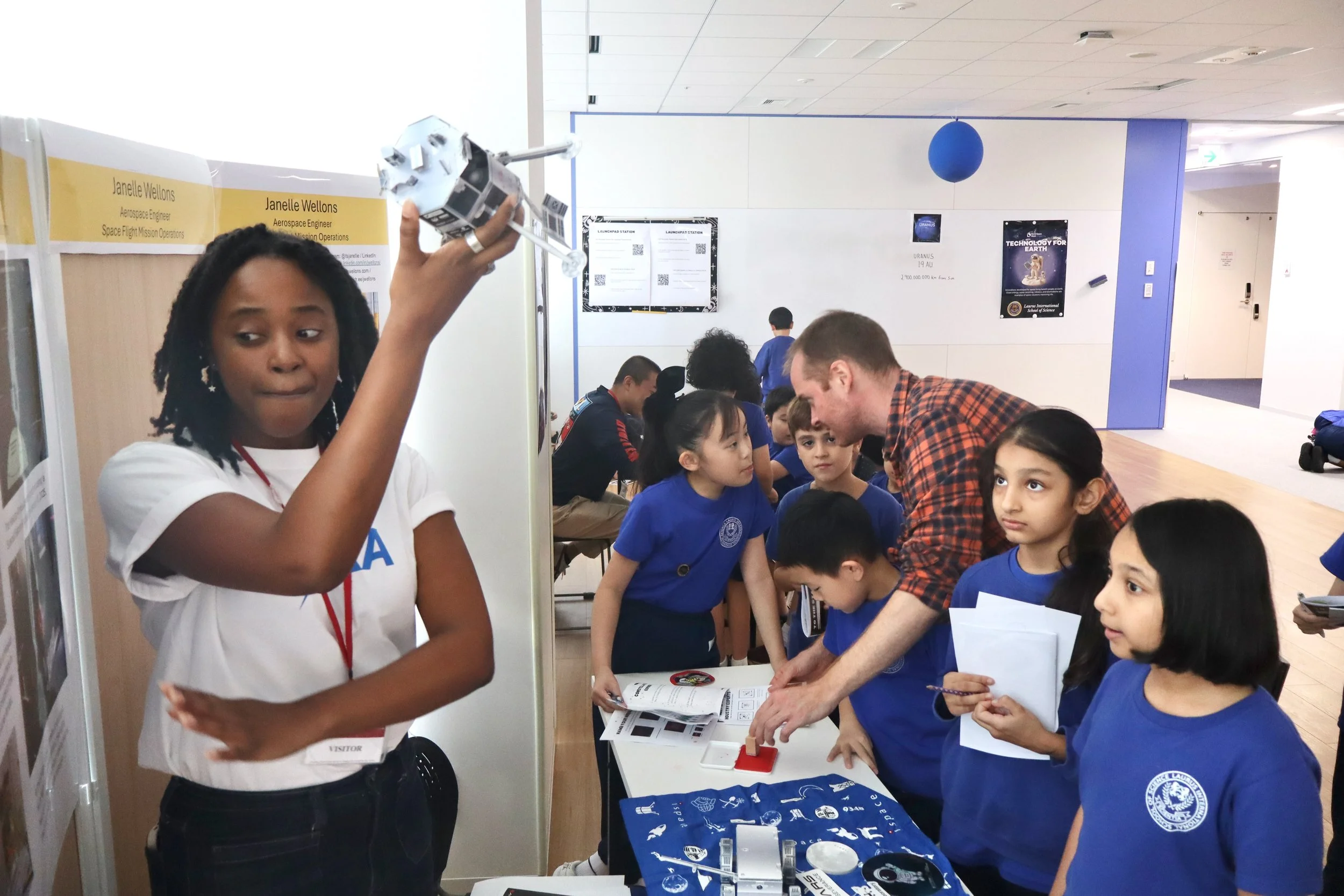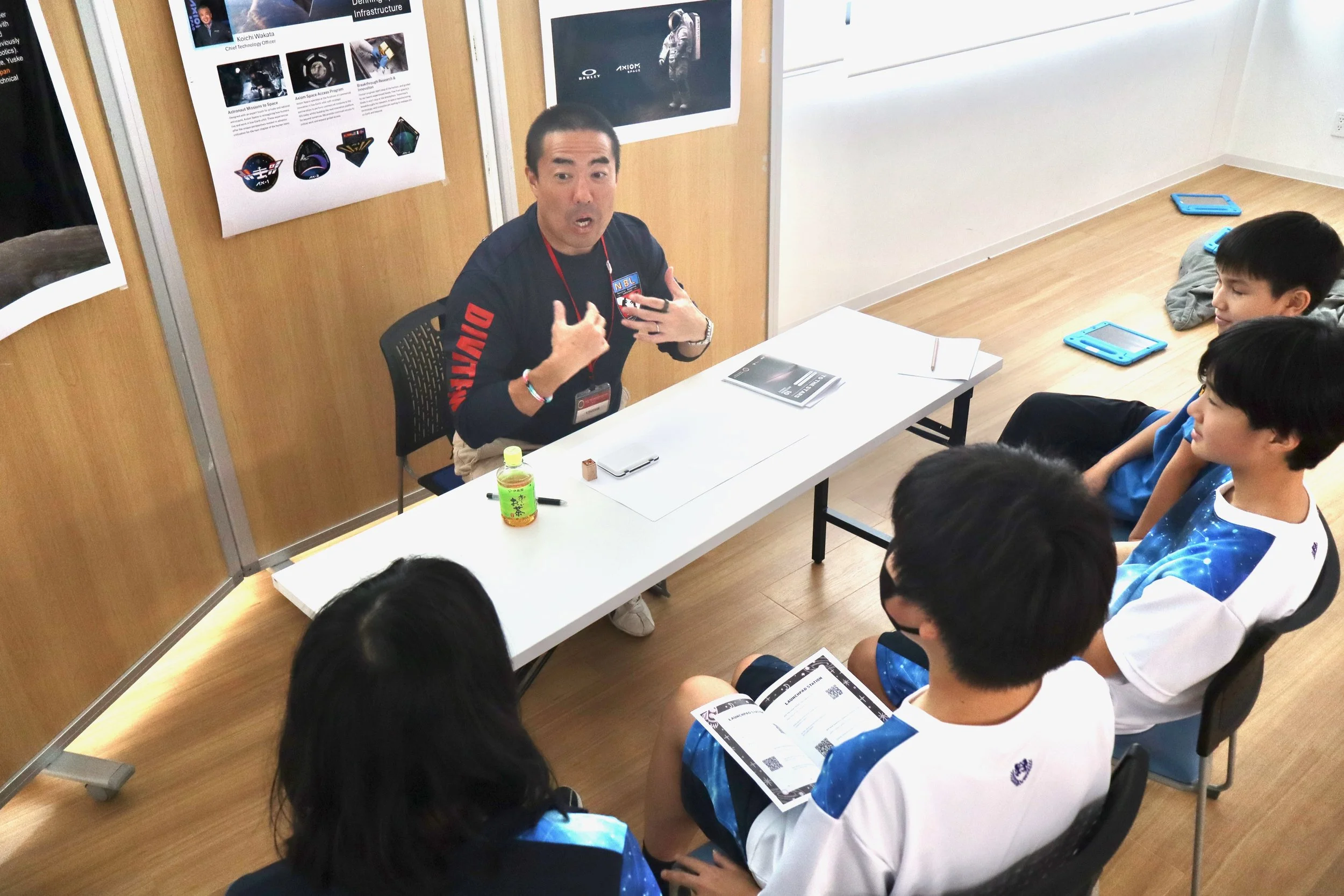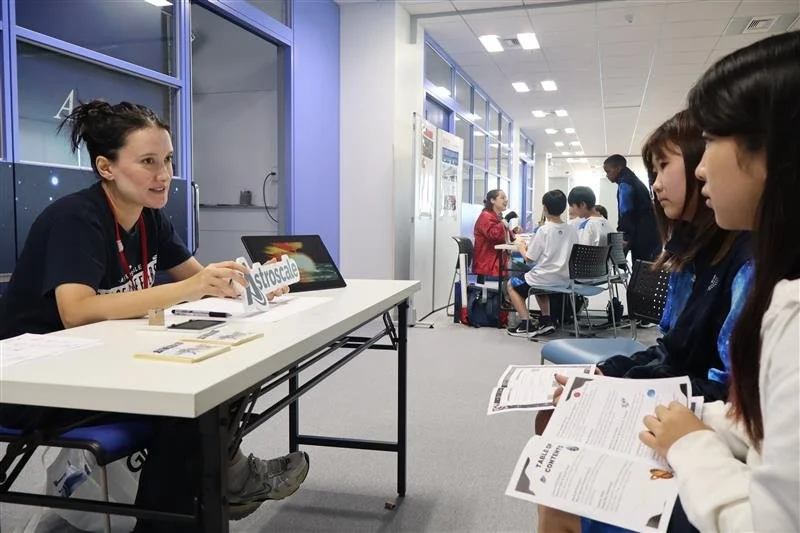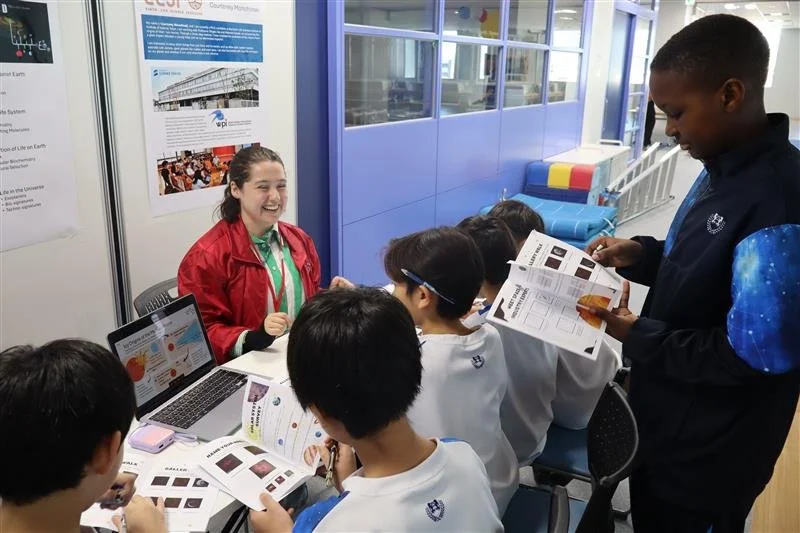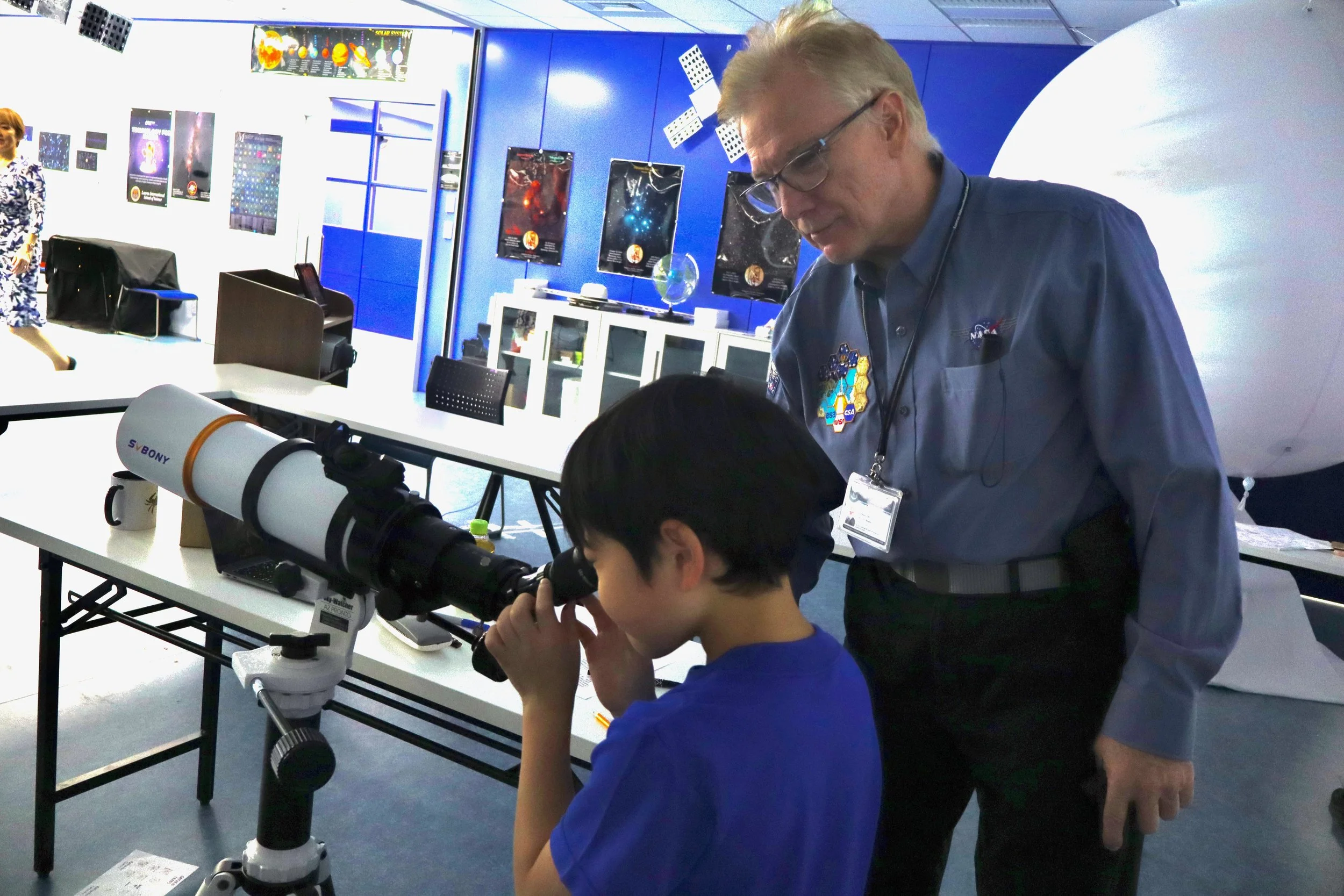Exploring the Cosmos: Laurus Celebrates World Space Week with Industry Experts and Hands-On Learning
World Space Week is an international event recognized in 95 countries that occurred earlier this month from October 4 – 10. It is officially defined on the organization’s website as “an international celebration of science and technology, and their contribution to the betterment of the human condition”.
The Laurus school has a particular edge in educational resources for Space Science education and Space Industry connections due to targeted efforts in this area. The school`s Ad Astra floor décor and the Ad Astra room facilities emphasize Astronomical sciences.
Hence, it was fitting that World Space Week was celebrated at Laurus with information exchange and related activities to engage middle-schoolers with space-themed education and fun.
The main event of the week; an interactive exhibition, was held on Friday (Oct.10th) on the Ad Astra floor. Students had the opportunity to speak with industry professionals from 5 different organizations that are directly (or indirectly) involved in space science. These included Astroscale, Axiom Space, ispace, Electra Chiropractic and the Earth Life Science Institute.
Besides the professional guest visitors, the students were challenged with various thought-provoking exercises for understanding the scale of our solar system, the make-up of deep sky objects (galaxies, nebulae, star-clusters, etc.), the nature and structure of constellations, and how to use astronomical telescopes.
Ms. Janelle Wellons demonstrates the ispace lunar lander craft she operates for moon exploration.
Dr. Arial Thorpe talked with the students about gravity and its effects on muscle and bone tissue, which is a critical consideration for human space travel.
Dr. Yuske Taguchi talked about the new space station being planned by Axiom Space, to replace the aging International Space Station (ISS).
Ms. Alison Howlett of Astroscale discussed the theme of sustainability of the space environment, and issue of growing concern due to thousands of low earth orbit satellites and thousands more being planned.
Ms. Courteney Mochinski talked about her research investigations and computer models to explain the moons of Mars and the origin of life in the solar system.
Paul Cizdziel (Doctor Cheeze) assisted the students in the use of the school`s refractor and reflector telescopes for astronomical viewing.
*************************
A note from our Science Advisor, Dr Paul E Cizdziel
The Ad Astra room on the 10th floor of Laurus International Primary & Secondary School is primarily dedicated to space science education, an increasingly important part of modern education. This field of science covers everything from amateur photographers (like myself), to aerospace engineering, government agencies, research institutions, and a rapidly expanding and opportunity-rich commercial sector. My intention with this blog is to periodically provide information of general interest to students and parents on current topics across all these categories.



